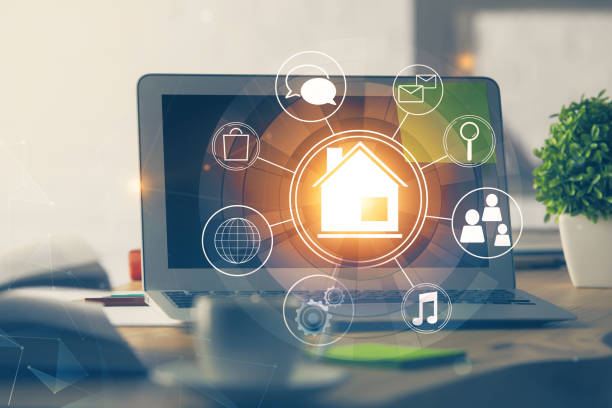
In a world where technology continues to transform various aspects of our lives, it’s no surprise that even gardening is benefiting from innovation.
Enter IoT-based smart irrigation systems, a revolutionary way to efficiently water your garden while conserving resources.
In this article, we’ll explore the fascinating world of smart irrigation and guide you through the process of implementing these systems to transform your gardening experience.
Revealing the Power of IoT in Gardening

IoT Meets Gardening
Gone are the days of manual watering and guesswork. IoT, or the Internet of Things, has paved the way for connected devices that communicate with each other, making gardening smarter and more efficient.
The Essence of Smart Irrigation
Imagine a garden that knows when and how much to water itself.
Smart irrigation systems utilise IoT technology to deliver water precisely when and where it’s needed, based on real-time data and environmental conditions.
The Role of Artificial Intelligence in Smart Irrigation
Smart irrigation isn’t limited to IoT technology alone; AI also plays a crucial role.
AI algorithms analyse data from various sources, such as weather forecasts and soil moisture sensors, to make precise predictions about plant water requirements.
This level of data-driven decision-making ensures that your garden receives the optimal amount of water, further enhancing water conservation efforts.
Sarah’s Lush Garden Makeover
Meet Sarah, an avid gardener who struggled to maintain her garden’s health due to unpredictable weather patterns.
With an IoT-based smart irrigation system, Sarah transformed her garden into a thriving oasis.
The system’s real-time data analysis allowed her to save water, reduce manual efforts, and witness her plants flourishing like never before.
Community Green Space Revival
In a community effort to restore a neglected green space, an IoT-based smart irrigation system was implemented.
With data-driven watering schedules, this once-dull area became a vibrant gathering spot.
This case study illustrates how smart irrigation not only benefits individual gardeners but also contributes to the well-being of entire communities.
DIY vs. Professional Installation
As you embark on your smart gardening journey, a crucial decision arises: should you install the system yourself or seek professional help?
While DIY installations can be cost-effective, they might require technical expertise. On the other hand, professional installations offer convenience but come at an additional cost.
Evaluate your comfort level and resources before making the choice that suits you best.
Exploring the Limits
The possibilities of smart gardening extend beyond just efficient watering.
Researchers are exploring ways to integrate plant health monitoring, disease detection, and even plant nutrition optimization using IoT and AI technologies.
The future envisions gardens that not only thrive but also adapt and evolve in response to changing conditions, thanks to the synergy of technology and nature.
Benefits of IoT-Based Smart Irrigation Systems
Water Conservation Made Easy
With IoT-based smart irrigation, water wastage becomes a thing of the past.
These systems analyse data from weather forecasts and soil moisture sensors to deliver the perfect amount of water, preventing overwatering.
Effortless Garden Care
Bid farewell to manual irrigation schedules. Smart systems adjust watering patterns automatically, giving you more time to enjoy your garden’s beauty.
Enhanced Plant Health
Proper watering leads to healthier plants. IoT-based systems tailor irrigation to each plant’s needs, ensuring optimal growth and vitality.
Cost Savings
By minimising water wastage, you not only contribute to a greener planet but also reduce your water bills.
Implementing IoT-Based Smart Irrigation: Step by Step
Step 1 – Assess Your Garden
Evaluate your garden’s layout, plant types, and existing irrigation setup to determine the best approach for implementing a smart system.
Step 2 – Choose the Right System
Select a smart irrigation system that suits your garden’s needs. There are various options available, from simple sensor-based systems to advanced controllers with app integration.
Step 3 – Installation
Install soil moisture sensors, weather stations, and irrigation controllers as per the manufacturer’s instructions. Position sensors strategically to ensure accurate data collection.
Step 4 – Configure Settings
Connect your smart irrigation system to your smartphone or tablet via a dedicated app. Configure watering schedules, plant types, and desired moisture levels.
Step 5 – Monitor and Adjust
Regularly monitor your smart irrigation system’s performance through the app. Make adjustments based on changing weather conditions and plant requirements.
Why IoT-Based Smart Irrigation is the Future of Gardening
Efficient Water Management
Sciencedirect.com says smart irrigation systems optimise water usage, making them an essential tool in the fight against water scarcity.
Environmental Impact
By conserving water and preventing runoff, IoT-based systems play a role in preserving our environment.
Time Savings
Gardening becomes less labour-intensive, allowing you to focus on other activities you love.
Okay my dear readers, now let us look into the most frequently asked questions about How to implement IoT-based smart irrigation systems.
How does a smart irrigation system know when to water my plants?
Smart systems use data from soil moisture sensors and weather forecasts to determine the optimal watering times.
Can I control the smart irrigation system remotely?
Absolutely! Most smart systems come with dedicated apps that allow you to control and monitor your garden’s watering from anywhere.
Will a smart irrigation system work with different types of plants?
Yes, smart systems are customizable, allowing you to set specific watering parameters for various plant types.
Do I need technical expertise to install a smart irrigation system?
While some systems may require basic technical know-how, many are designed for easy installation, making it accessible to all gardeners.
Can a smart irrigation system adapt to changing weather conditions?
Yes, smart systems continuously gather data and adjust watering schedules based on real-time weather updates.
Conclusion
As it is said, “Change is not a threat; it’s an opportunity.” Embracing IoT-based smart irrigation systems is not just about convenience; it’s about revolutionising the way we nurture our gardens.
By combining technology with nature, we create efficient, sustainable, and vibrant outdoor spaces that thrive while we reap the benefits.
So, step into the world of smart gardening and experience the joy of nurturing your garden the smart way.








